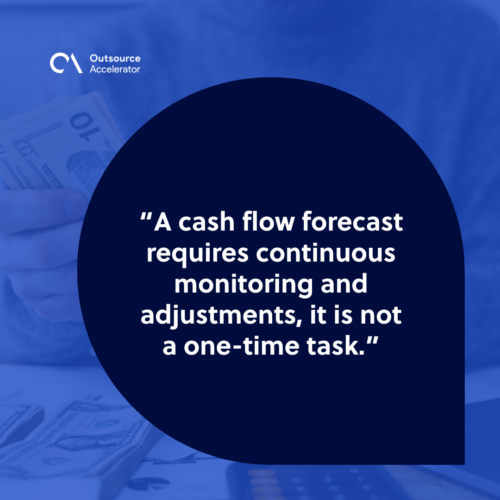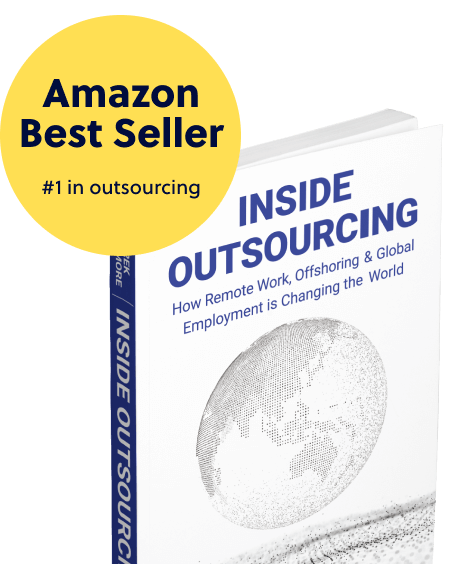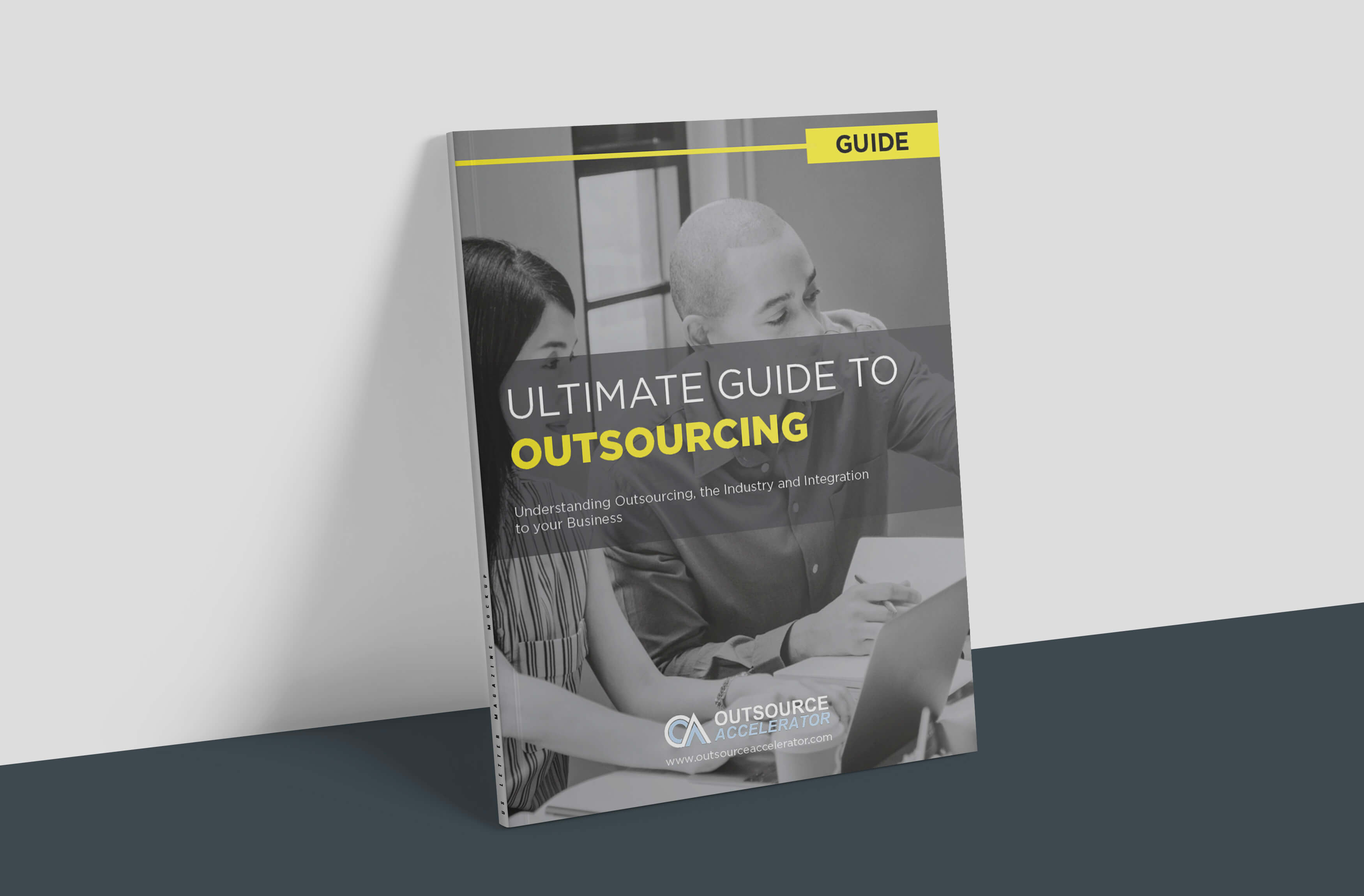How to create a cash flow forecast in 5 simple steps

Many businesses struggle with cash shortages not because they aren’t profitable, but because they fail to manage their cash flow effectively.
Without proper planning, a business may struggle to pay suppliers, fund operations, or capitalize on growth opportunities due to cash shortages.
Meanwhile, a strong cash flow builds a safety net for unexpected costs. One way to achieve this is by creating a cash flow forecast, a tool that helps predict cash movements.
In this article, we’ll discuss cash flow forecasting and walk through five simple steps to help you effectively forecast the ins and outs of your finances.
What is a cash flow forecast?
A cash flow forecast, often interchanged with cash flow projection) estimates the amount of cash a business will receive and spend over a specific period. It provides a detailed outlook on future cash movements and helps companies to manage liquidity and plan expenses.
There are two main types of cash flow forecasts, each serving different business needs:
- Short-term forecast: Covers daily or weekly cash movements, helpful in managing immediate expenses.
- Long-term forecast: Extends a year or more, ideal for strategic financial planning and securing investments.

Good cash flow forecasting does more than just track money; it empowers you to make better financial decisions for your business. Here are some of its key benefits:
- Smarter budgeting – Accurate cash flow estimates help allocate funds efficiently and prevent overspending.
- Preparedness for slow periods – Anticipating cash shortages allows you to set aside extra funds and stay financially stable.
- Enhanced decision-making for investments and expenses – A clear cash outlook enables better supplier negotiations and increases your chances of securing investor funding.
5 steps to create an accurate cash flow forecast
Creating an accurate cash flow forecast doesn’t have to be complicated. Follow these steps to make sure you’re covering all your bases.
1. Determine your forecasting objectives
Some businesses need short-term forecasts to manage day-to-day operations, while others require long-term projections for strategic planning. Before jumping into numbers, ask first: What do I need to forecast?
Knowing your goal keeps the forecast focused and valuable. Here are some key things to consider:
- Are you looking at cash flow for the next month, quarter, or year? Short-term forecasts help with daily operations, while long-term ones assist with strategic planning.
- Do you need this forecast to secure funding, manage seasonal changes, or ensure you can pay suppliers and employees on time?
- If your revenue fluctuates, like in seasonal businesses, you might need a more detailed and frequent forecast.
Further, you can create an accurate projection that supports effective financial planning by identifying your needs, timeframe, and business type.
2. Identify and list all cash inflows
A cash flow forecast must capture every source of incoming cash. The accuracy of this step determines how well the business can anticipate available funds.
| Cash inflow source | Description |
| Sales revenue | Income from selling goods/services |
| Customer payments | Payments received from clients/customers |
| Loan disbursements | Funds received from financial institutions |
| Investment | Capital raised from investors |
| Grants or subsidies | Government or private sector funding |
It’s important to note that historical data plays a significant role in predicting future inflows. For instance, businesses with a consistent revenue trend analysis can rely on past performance. If your company is new, estimate the budget smartly and adjust it as real numbers come in.
3. Identify and list all cash outflows
In your cash flow forecast table, you should accurately list all cash outflows to prevent underestimations that could lead to financial miscalculations.
| Cash outflow source | Description |
| Rent or mortgage | Monthly lease or property payments |
| Payroll and benefits | Salaries and employee benefits |
| Supplier payments | Payments for goods and services |
| Loan repayments | Scheduled debt payments |
| Utilities and operations | Electricity, water, internet, etc. |
| Marketing and advertising | Promotional and advertising expenses |
Some expenses remain fixed, while others fluctuate. Variable costs like raw materials, commissions, and seasonal promotions require more attention to ensure they align with revenue expectations.
4. Calculate your net cash flow
With cash inflows and outflows identified, the next step involves calculating the net cash flow. The formula is straightforward:
Total cash inflows – Total cash outflows = Net cash flow
For example:
| Calculation | Amount ($) |
| Total cash inflows | 50,000 |
| Total cash outflows | 30,000 |
| Net cash flow | 20,000 |
A positive net cash flow means a business brings in more cash than it spends, indicating strong financial health. In this case, the company’s total cash inflows of $50,000 exceed its outflows of $30,000, resulting in a $20,000 surplus.
This extra cash can be reinvested into the business, saved as a financial cushion, or used to explore new growth opportunities.
5. Analyze and adjust your forecast
A cash flow forecast requires continuous monitoring and adjustments, it is not a one-time task. Therefore, you must analyze your projections against actual financial performance. This is the most critical step in identifying discrepancies and refining future forecasts.
Some key areas to review include:
- Unexpected expenses or delayed payments – Late customer payments can throw off your forecast.
- Seasonal trends – Some months bring in more revenue than others.
- Market changes – A shift in customer demand or economic conditions impacts cash flow.
Regularly updating your cash flow forecast table ensures you remain agile and prepared for financial uncertainties.

Maintain financial stability with an accurate cash flow forecast
A well-structured cash flow forecast isn’t just a fancy financial tool—it’s what keeps your business steady. Otherwise, you might scramble to cover unexpected expenses or miss out on growth opportunities.
You also need to decide how often to update your forecast and refine it based on real numbers. The more you track and adjust, the better prepared you’ll be.
Following these simple steps can strengthen your cash management strategies and keep your business financially secure for the long haul.







 Independent
Independent




